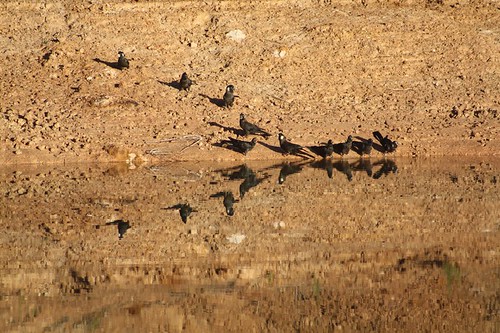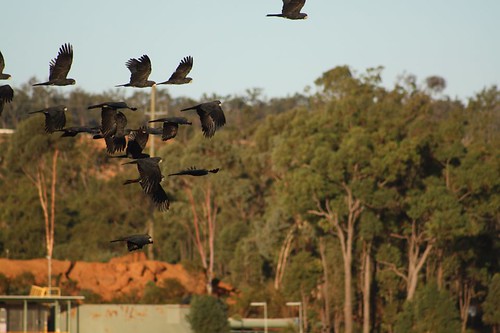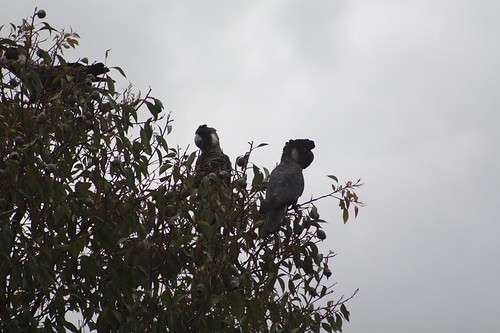 Carnaby’s cockatoos feeding.Rehabilitated mining pits are luring Western Australia’s iconic black cockatoos, proving to be a new food source, research has found.
Carnaby’s cockatoos feeding.Rehabilitated mining pits are luring Western Australia’s iconic black cockatoos, proving to be a new food source, research has found.
Murdoch University researchers have spent three years documenting the feeding habits of black cockatoos at the Newmont Boddington gold mine, located about 120 kilometres south east of Perth.
“The pits we studied had been revegetated with native trees and shrubs less than 15 years ago,” Murdoch University PhD candidate Jessica Lee said.
 Black cockatoos at mine sump.“We were able to confirm that cockatoos were feeding at these sites after about seven years, when the plants begin producing flowers and seeds.”
Black cockatoos at mine sump.“We were able to confirm that cockatoos were feeding at these sites after about seven years, when the plants begin producing flowers and seeds.”
Dr Hugh Finn, from Murdoch University’s School of Veterinary and Life Sciences, said the findings are particularly important for industries involved in land clearing, such as mining and property development.
“It’s promising to see that these threatened cockatoos are feeding at revegetated sites after only seven years,” he said.
 Forest red-tailed black cockatoos on the moveThe study looked at three species of threatened black cockatoo, which only inhabit southwest WA, including the Forest red-tailed black cockatoo, Carnaby’s cockatoo and Baudin’s cockatoo.
Forest red-tailed black cockatoos on the moveThe study looked at three species of threatened black cockatoo, which only inhabit southwest WA, including the Forest red-tailed black cockatoo, Carnaby’s cockatoo and Baudin’s cockatoo.
“Western Australia’s iconic black cockatoos are smart, curious creatures. It makes sense they would learn to find food in new places,” Lee said.
 Baudin’s cockatoos are also presentFinn explained development and land clearing in WA’s southwest still threatens animals and reduces the amount of food and shelter available.
Baudin’s cockatoos are also presentFinn explained development and land clearing in WA’s southwest still threatens animals and reduces the amount of food and shelter available.
“Of course, the ideal option for native animals is to preserve the natural habitat wherever possible.”
“Food is important, but it is also critical to preserve big, old trees across the forest, particularly as hollows for cockatoos generally occur in trees that are more 200 years old,” Finn said.